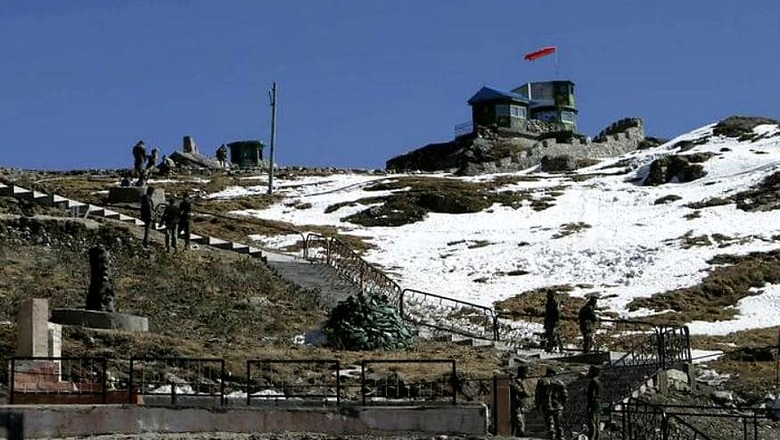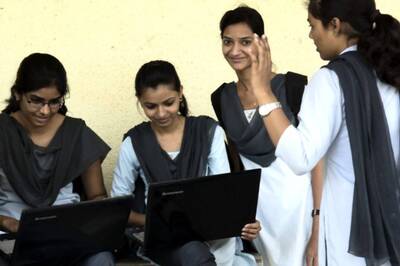
views
The India-China standoff is for the world to see, and the Dragon doesn’t seem to be cutting down on the fire. The Doklam incident has led to the Chinese Army to move tens and thousands of tonnes of military hardware into the remote mountainous Tibet Regions after the standoff with Indian Troops in the Doklam Area in the Sikkim Sector, the mouthpiece of the PLA said on 19 July, 2017.
The vast haul was transported to a region south of the Kunlun Mountains in Northern Tibet by the Western Theatre Command which oversees the restive regions of Xinjiang and Tibet, and handles border issues with India, reported the PLA Daily, the mouthpiece of Chinese Military.
China recently briefed several foreign diplomats posted at Beijing and stated that India had trespassed into Chinese territory and changed the status quo.
Well, facts be mentioned, it’s not India that has changed the status quo. The two governments had in 2012 reached an agreement that the tri Junction boundary point between India, China and Bhutan will be finalized in consultation with the concerned countries. Any attempt to unilaterally decide tantamount to determining the Tri Junction to be in violation of the understanding. India and China face each other at Doka la, Zompleri is where China wants the road to go, which is under occupation of Bhutan.
On June 29, Bhutan had put out its Press Release which stated that on June 16th, “the Chinese Army started constructing a motor-able road from Doka la in the Dokalam area towards the Bhutan Army camp at Zompelri. Boundary talks are ongoing between Bhutan and China and we have written agreements of 1988 and 1998 stating that the two sides agree to maintain… status quo on the boundary as before March 1959.”
Let’s go back to a time which the Chinese have often invoked. In the context of Chinese intimidations and threats in 1962, as they are heard today, a high level meeting was held then under the chairmanship of the Defence Minister Mr Krishna Menon and attended by The Chief of Army Staff General PN Thapar, Lt Gen LP Sen, General Officer Commanding Eastern Command, then located in Lucknow, he was popularly called Bogey Sen, Cabinet Secretary Mr. SS Khera, BN Mullik, the Intelligence Chief and a few others. It was decided in the meeting that the Chinese must be evicted from south of Thagla Ridge immediately and by force if necessary. Lt Gen Umrao Singh and Maj Gen Niranjan Prasad were tasked to evict the Chinese.
The concerned officers expressed their inability on account to do the same. They cited the build up by China, lack of reinforcements from our own side, lack of rations, equipment and clothing as reasons for being unable to do so. With the resources they had, it was beyond them to evict the Chinese.
Lt Gen BM Kaul was entrusted with the responsibility and Lt Gen Umrao Singh was divested of his responsibility. It was foolish to think that the Chinese will not react for a territory which they claimed was theirs. That the Chinese will not attack was presumed by the meeting presided over by the Defence Minister hence Pandit Nehru was on a visit to Sri Lanka.
Some policy observers have directly compared the current standoff with 1962 by substituting Dhola Post to Doklam Plateau.
The incident stems from differences between Bhutan and China on to the exact location of the Tri Junction between the three countries. China sees the issue from the point of sovereignty and India sees the issue from national security and Bhutan strongly feels that status quo be maintained till resolution of the Tri Junction. The relations, after India has stayed away from China’s OBOR initiative, are far from cordial. If Chinese claims to the Doklam plateau and tri junction at Mount Gipmochi are conceded, then it would bring China within striking distance of the Siliguri Corridor, the so-called Chicken Neck within 30 Kms from the conceded position. China is acting tough because it prefers to negotiate with Bhutan directly and not through India. One wonders why.
In the present Doklam incident, the Chinese have been quoting the 1890 agreement between Britain and China which they insist has been accepted by India. Article 1 of the Convention states that ‘the line commences at Mount Gipmochi’ which is in Bhutan, and not at Batang la up north on the same ridge line. The agreement is between India and China, since Sikkim merged with India and Tibet was annexed by China. Since the place of dispute is in Bhutan, and it has an issue of the grazing ground on the Doklam Plateau with China, Bhutan has gone ahead and held 24 rounds of talks with China to resolve the boundary dispute, despite having no diplomatic relations with it.
The 2012 agreement between India and China was to involve Bhutan in any agreement since it involved Bhutan’s territory. However, this June, China (unilaterally) moved with a design to construct the road. The contention by China that the de Marche issued by Bhutan to China was an afterthought instigated by India is totally baseless. Presuming China is right, does it still give it rights to change the status quo on ground unilaterally when the 2012 agreement prohibits change of status quo without the consent of the concerned country of a disputed area?
India has an agreement with Bhutan that neither country will allow any activity on its soil which is detrimental to the security of either. Bhutan is an independent country with a 2007 Treaty of Cooperation signed with India.
Sikkim merged with India by a Referendum in 1975, however Pandit Nehru has in a letter to Prime Minister Chou en Lai dated 22 March 1959, drawn his attention to the 1890 agreement along with the treaty of 1842 concerning Ladakh and the McMahon line and in para 8 of the letter has drawn the attention of the PM of China, stating, “You will appreciate that the continuing publication of Chinese maps showing considerable parts of Indian and Bhutanese territory as if they were in China, is not in accordance with long established usage as well as treaties, and is a matter of great concern to us.” He ends his letter with a great sense of respect for the Chinese people and said, “It would be most unfortunate if these frontier questions should now affect the friendly relations existing between our countries. I hope therefore that an early understanding in this matter will be reached”.
Pandit Nehru passed away in 1964 and Mrs. Gandhi in 1984 and Rajiv Gandhi whose period led to signing the Agreement on the Maintenance of Peace and Tranquility along the line of Actual Control, on the India – China border Areas, was assassinated in 1991. George Fernandes baffled everyone by stating that China is Enemy Number One, and now yet another former Raksha Mantri Mr Mulayam Singh has said in the Parliament that China is a bigger threat than Pakistan to India. These statements are reflective of lack of trust and confidence in China. Add to that the media statements emanating from Chinese media, controlled by the State, which is nothing but reckless adventurism. We can safely assume that a country, which has resolved boundary disputes with all its neighbours other than India and Bhutan, have a strong reason to believe, that China will not accept India as a rising power in Asia
To conclude, I would say let atavism meet the atavistic on the Tibetan Plateau as conciliation and cooperation is seen as cowardice by China. This cartographic, creeping and covert encroachment, if not put to halt now will be the Achilles heel of the Indian growth. It is time now to call bluff a bluff and shame the Axis of Evil and perform to perish all thoughts of China Pakistan Exemplary Combination (CPEC) to attain moral ascendancy ,to subdue an ancient civilisation by the centre of universe. Trade be damned. It is better to live honourably than suffer humiliation at the hand of a China man who will otherwise start looking 10 feet tall. Are we ready to convert his feeling of security into insecurity by not firing a single bullet or are we touching the ‘Tigers Buttocks’?
(The author, in 1974, led the 4 Kumaon regiment that planted the first Indian flag on Siachen Glacier at Bilafond La which began Operation Meghdoot. Views are personal)




















Comments
0 comment